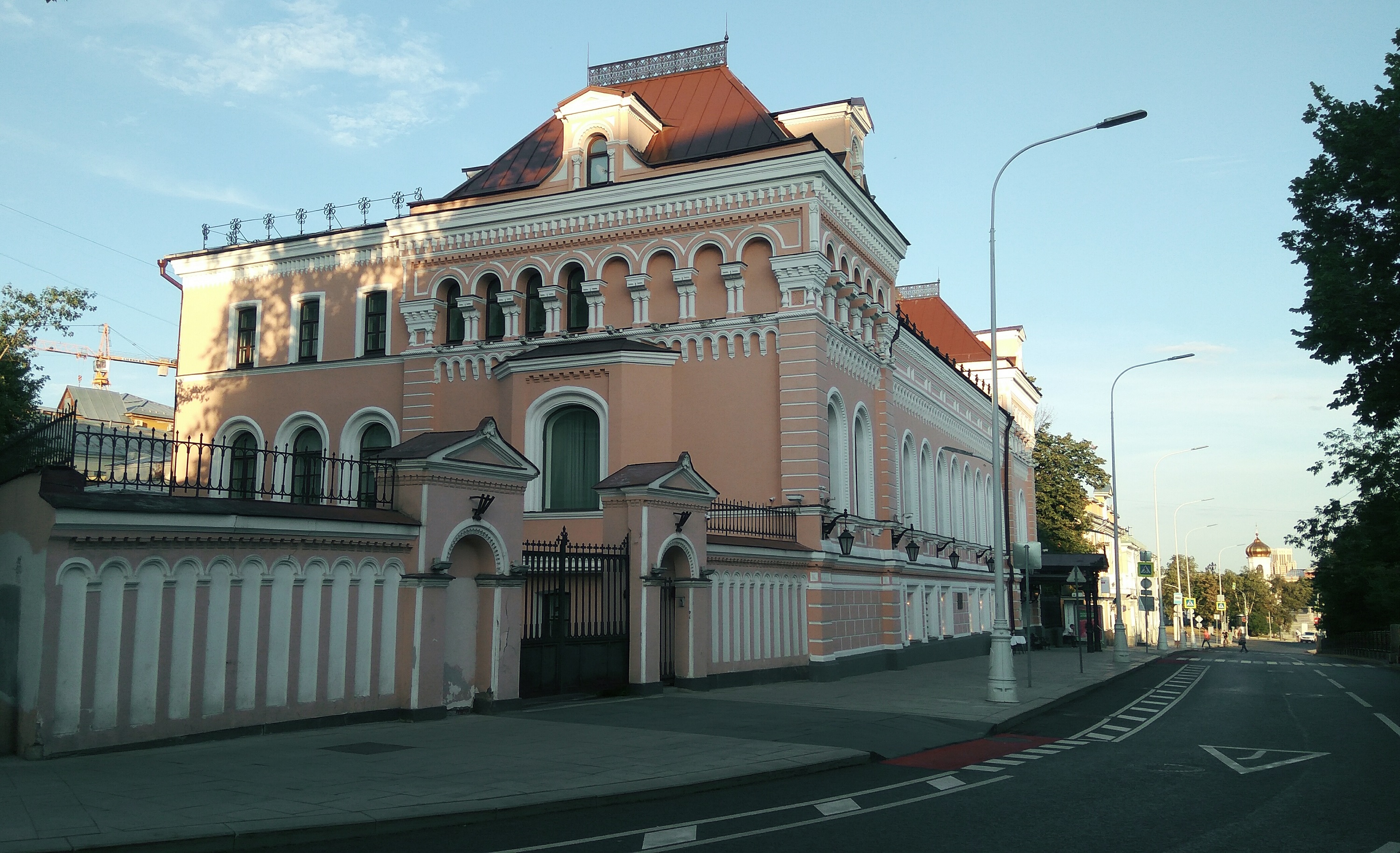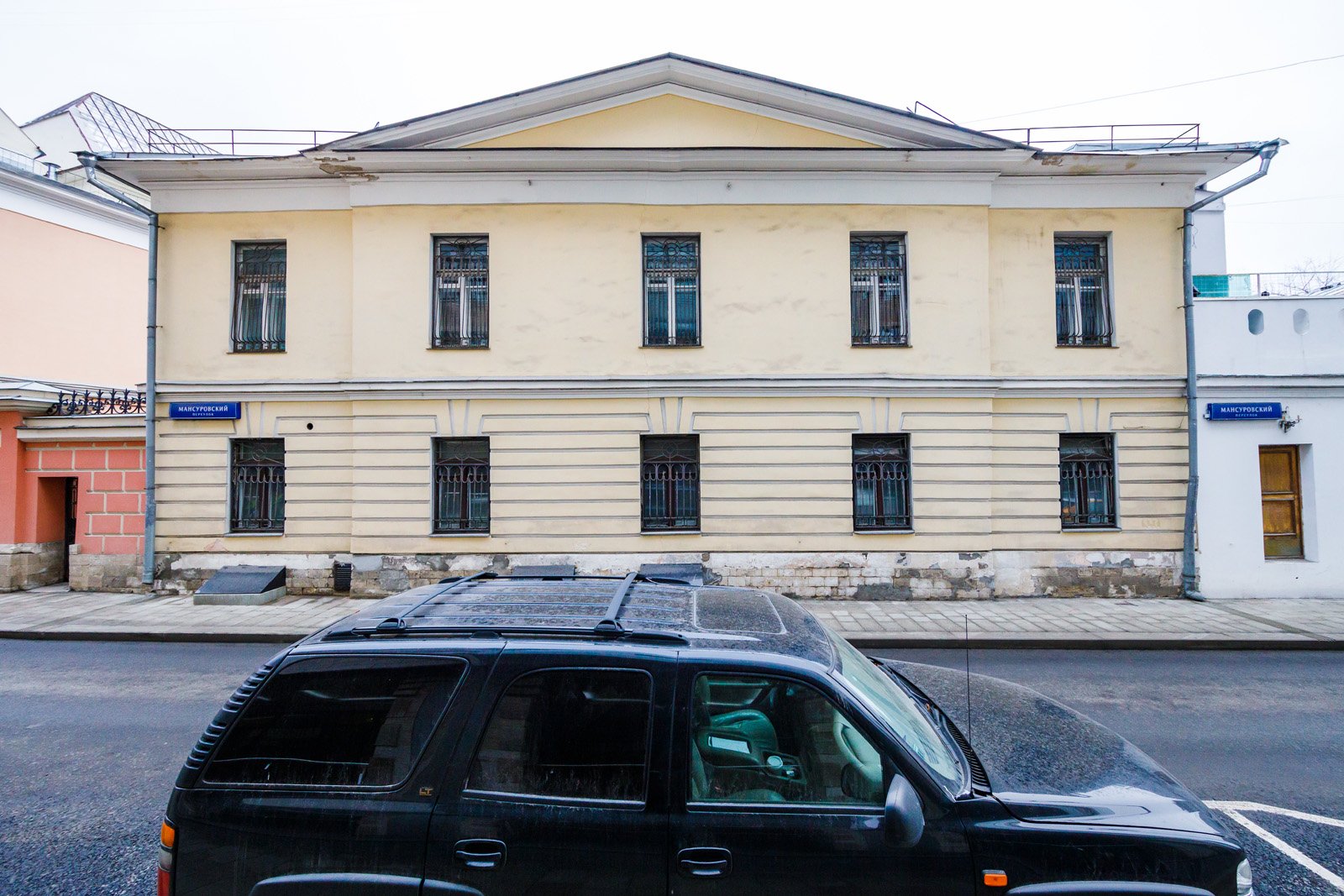Информация о здании
Двухэтажное здание светло-палевого цвета в Еропкинском переулке − классический образец городского особняка начала ХХ века в стиле модерн. Статус объекта культурного наследия регионального значения особняк получил в 2012 году.
В конце XVII века здесь было четыре участка земли, которые один за другим приобрел и объединил И.И.Бестужев. Впоследствии эта земля принадлежала его наследникам почти два века. В 1879 году новая владелица – жена титулярного советника В.Д.Головина – приказала снести крыльцо старого особняка, пристроила к выходящей во двор части дома флигель с каменным основанием и деревянным корпусом, а к выходящему в сад южному фасаду здания – новое крыльцо. Архитектором флигеля был В.П.Гаврилов. В начале 1900-х годов хозяева усадьбы несколько раз менялись, пока она не стала собственностью купца Н.М.Потапова, начавшего капитальную реновацию владения. Старое здание было снесено, а на его месте в 1905 году был построен сохранившийся доныне дом. Проектировал его военный инженер Иван Тулаев, который работал вторым архитектором Московского университета, принимал участие в строительстве Музея изящных искусств на Волхонке. Это был каменный двухэтажный дом с нежилым полуподвалом. Позднее с северной стороны здания достроили мезонин.
Следующей владелице, О.Н.Чижовой, внешний вид главного дома не понравился, и в 1909 году она пригласила известного российского архитектора и инженера, признанного мастера московского модерна Бориса Шнауберта, который много работал по заказам богатой купеческой семьи Абрикосовых, участвовал в строительстве знаменитого дома Перцева в Соймоновском проезде. По проекту Шнауберта, главный дом городской усадьбы Чижовой окружили несколько пристроек. До наших дней от усадьбы сохранились лишь главный дом и чугунная ограда с воротами начала XX века.
Зодчий вытянул фасад особняка вдоль Еропкинского переулка, углубив северную часть во двор. Впоследствии внутренние помещения были превращены в отдельные квартиры, которые сдавались в аренду. В 1950-х годах этот особняк служил резиденцией Никиты Хрущева.
Особняк с оградой и сегодня обладает градоформирующими характеристиками: он является частью исторической фронтальной застройки Еропкинского переулка и одним из главных его архитектурных украшений.
Здание сохраняет градостроительные характеристики, объемно-пространственную композицию и архитектурно-художественное оформление в редакции 1909 г. – середины ХХ в. Особое внимание стоит обратить на лепнину и консоли в виде прекрасных женских герм, обрамляющие центральное окно нижнего этажа.
В 1990-е годы здесь находилось посольство Королевства Таиланд. В наши дни это административное здание.
Автор статьи






































